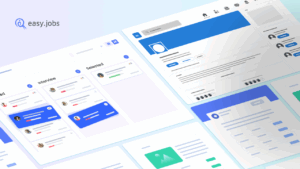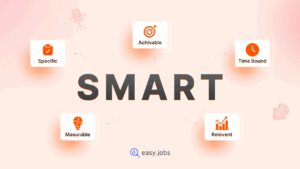We’ll let you in on a not-so-secret tip that can uplift your hiring experiences like never before. You’re losing out on a veritable gold mine of useful information if your team is one of the many out there that doesn’t use data and analytics in recruitment.

Data and analytics in recruitment entail gathering and analyzing pertinent information taken from real-world events and sources. This procedure helps us forecast more effective ways to find, evaluate, and choose individuals in the recruiting process. As a consequence, we can employ them more quickly and successfully, driving the best results possible.
Role Of Data And Analytics In Recruitment Procedure
Data analytics may be used by recruiters to assess potential new hires. For instance, by identifying the hard and soft skills of the company’s top achievers, we can establish the necessary requirements and expectations for new workers.
The most successful HR departments will be those that can leverage big data and analytics in the recruiting process. We live in the era of social recruiting, and identifying the finest employees by focusing solely on conventional techniques of recruitment may be akin to searching for an illusive four-leaf clover given the volume of data and candidate profiles to go through.

Recruitment Analytics: What Is It & How It Works?
Organizations can employ more quickly by adopting recruitment analytics, which combines data with predictive analysis. This can help you streamline your decision-making process during recruitment based on past data that worked for your company.
You can identify top sources of quality candidates, determine the source of the best performers, narrow down your pool of possible candidates based on skills that worked well, and more. These will not only help you hire better but also help to reduce your cost per hire.
The path to implementing data-driven recruiting at your company is through recruitment analytics, and by embracing data-driven hiring, you can improve the efficacy and efficiency of your recruitment process. In order to ensure that you do it effectively, let’s get started and examine the best practices.
Best Practices To Use Data And Analytics In Recruitment
Let’s discuss how to implement data and analytics in your own business now that you are aware of what is possible with them and the advantages they might offer.
⚙️ Pick A Solid Analytics Tool For Recruitment
There are a plethora of HR systems and data analytics solutions available on the market. The truth is that no one solution will work for everyone, so you’ll need to do some research to find out which is right for you and your company.
Predictive analytics tech stacks are best when integrated with ATS (Applicant Tracking System) or HRIS(Human Resource Information System) systems. or the location where you gather and keep candidate data. Choosing an ATS with predictive analytics features is quite practical for having all input and output data in one location.

🎯 Develop A Pin Point Recruitment Matrix
Analytics tools will gather as much or as little data as you instruct them to, as was already mentioned. But knowing what you’re attempting to improve helps you narrow your attention to the KPIs that are truly important.
Making a recruiting matrix is an excellent place to start with this. These are straightforward spreadsheets that list your top areas for development along with the key metrics that pertain to each. Then, you may designate high, medium, and low-priority KPIs by weighing the significance of particular indicators relative to others. A recruiting matrix is a fantastic tool for visualizing your team’s priorities in recruitment so that you may upload your own specific factors.

🧮 Always Monitor Success Rates
If you’re not making changes to who and how you recruit, knowing and reporting on KPIs mean nothing. It also has little meaning if you set it once and never experiment, modify your hiring practices, or change your reporting metrics.
A game of transformation and gradual progress is what predictive analytics in recruiting is by its very nature. Based on the facts at hand and the results of your activities, it makes predictions about the future. You should follow your platform’s suggestions on a regular basis, make your own modifications and evaluate the outcomes, and make sure that your data pool is representative of the outside world if you want to get the most out of these platforms.

👨💻 Collect & Leverage Relevant Data
The simplest way to put it is as renowned statistician Edward Tufte said: “If the statistics are dull, your numbers are invalid.”
Knowing which data to gather and how to use it is a necessary part of using recruitment analytics to guide your recruiting strategy. For instance, you must gather data on candidate quality as well as information from various sources on a daily basis. Because if you need to assess candidate quality by the source to identify where your top candidates are coming from.

💡 Push Your Collective Into Perspective
Data by itself cannot provide any information. Numbers have an essential tale to tell, as data visualization expert Stephen Few so eloquently put it: “Numbers have an important story to tell. They rely on you to give them a clear and convincing voice.”
You must put recruiting metrics into context if you want to utilize them wisely. Keeping track of your advancements over time is one approach to do this. You may monitor where you are in relation to your goals and compare your performance to industry standards by keeping track of your progress month over month (MoM) and year over year (YoY).

You may effectively implement improvements that improve your hiring process both now and in the future by periodically analyzing and monitoring progress. Change takes time to manifest. Imagine it like a marathon, not a sprint.
Bonus Read: What Is Lateral Hiring & Steps Of Lateral Recruitment?
Did you know that, according to 63% of recruiters, the primary obstacle to hiring new employees is the true talent shortage? In order to employ specialists or professionals who are already succeeding in their jobs, lateral hiring has become popular.
Also, you can learn all you need to know about lateral recruiting if you want to hire a candidate for an executive or expert job by reading this blog all the way through.

If you find this blog useful to start recruitment right away, subscribe to our blog to read more blogs like this. Join our community to share your valuable thoughts or comment below.





